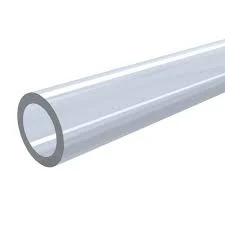Ное . 11, 2024 18:17 Back to list
round pvc welding rod
Understanding Round PVC Welding Rod A Comprehensive Guide
PVC, or Polyvinyl Chloride, is one of the most widely used plastic materials in various industries due to its durability, versatility, and cost-effectiveness. Among the tools and materials used for working with PVC, round PVC welding rods play a crucial role. These rods are instrumental in the welding process of PVC sheets and pipes, providing strong and reliable joints essential for both structural and aesthetic applications. In this article, we will explore the properties, applications, benefits, and installation process of round PVC welding rods.
Properties of Round PVC Welding Rods
Round PVC welding rods are typically manufactured from high-quality PVC resin, ensuring consistent performance and reliability. They come in various diameters, commonly ranging from 1/8 inch to 1 inch, accommodating different welding needs. The rods are also available in a range of colors, allowing for aesthetic flexibility depending on the application. Their flexibility and melt characteristics enable them to fuse seamlessly with PVC materials when heated, creating a strong bond.
Applications of PVC Welding Rods
The applications of round PVC welding rods are extensive. They are predominantly used in industries such as plumbing, construction, and sign-making. In plumbing, for instance, these rods play a critical role in the assembly and repair of PVC piping systems, which are commonly used in residential and commercial plumbing. They are also utilized in the fabrication of tanks, ducts, and other structures requiring durable plastic joints.
In the construction sector, round PVC welding rods are crucial for creating custom shapes and fittings. The rods can be melted and molded to fit specific project requirements, making them a favorite choice for building structures that require unique dimensions. Furthermore, in the sign-making industry, they are used to create signage that requires durable outdoor use, adhering firmly while maintaining aesthetic appeal.
Benefits of Using Round PVC Welding Rods
round pvc welding rod

One of the primary advantages of using round PVC welding rods is the strong structural integrity they provide. When welded properly, the joints formed are often stronger than the original materials, ensuring longevity and reliability in applications. Furthermore, the welding process using these rods is efficient and can be completed quickly, which is a significant benefit in large-scale projects or repairs.
Another benefit is the ease of use. Round PVC welding rods can be easily manipulated, and the welding process does not require specialized knowledge beyond understanding basic welding techniques. This accessibility makes them suitable for DIY projects as well as professional applications.
Installation Process
The installation process of round PVC welding rods involves a few key steps. First, ensure that the surfaces to be joined are clean and free of contaminants. Next, heat the welding rod and the surfaces until they reach the necessary melting point—typically around 200 to 220 degrees Celsius for PVC. Once the materials are sufficiently heated, the rod is applied to the seam and allowed to cool, forming a solid joint.
For optimal results, it is essential to maintain a consistent speed and pressure during the welding process, ensuring a smooth and even application. After the joints have cooled, they can be sanded or finished as necessary to meet project specifications.
Conclusion
Round PVC welding rods are indispensable tools in the realm of PVC fabrication and repair. Their strength, versatility, and ease of use make them a preferred choice across various industries. Whether for plumbing, construction, or creative projects, mastering the use of these rods can significantly enhance the quality and durability of the final products. As the demand for PVC applications continues to grow, understanding and effectively utilizing round PVC welding rods will remain critical for professionals and DIY enthusiasts alike.
-
Durable Glossy PVC Rigid Sheet | Premium High-Shine Panels
NewsAug.26,2025
-
Durable PP Rigid Sheet: Lightweight, Chemical Resistant Solutions
NewsAug.21,2025
-
PVC Grey Sheet for Extraction: Chemical Resistant & Durable
NewsAug.19,2025
-
Durable PVC Pipe Fittings for Plumbing & Irrigation Needs
NewsAug.18,2025
-
HDPE Steel Belt Reinforced Spiral Corrugated Pipe | High Strength
NewsAug.17,2025
-
HDPE Pipe Fittings: Durable, Leak-Proof Solutions
NewsAug.16,2025

